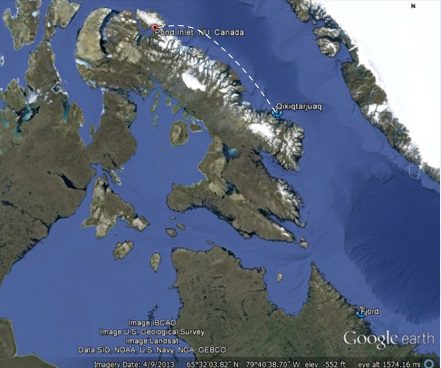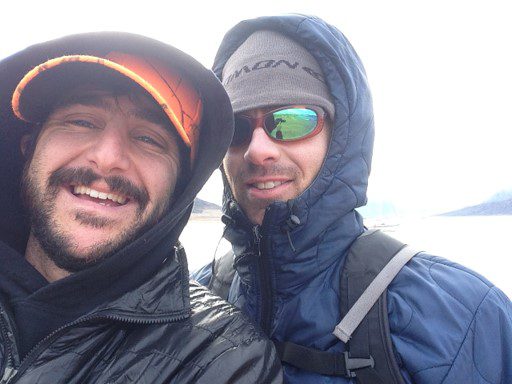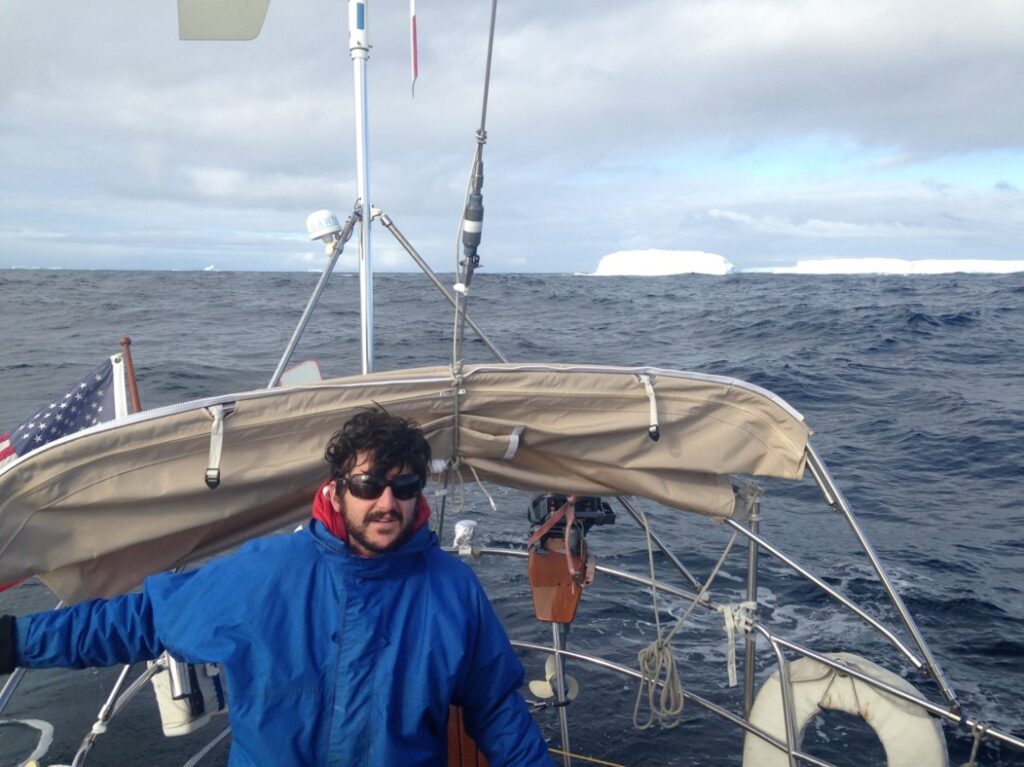The Stars are Back!

Tuesday September 2, 2014 (70o 50’N 68o 57’W): Off the Baffin Coast
The winds were light and the seas calm leaving Pond Inlet on Sunday evening, with Eli, our new crew member (and provider of home baked cookies and Jameson whiskey ) at the helm. His enthusiasm and energy is great to have on board.

As we head down the coast, the seawater temperature is now a balmy 40oF as compared with the frigid 30’s in Lancaster Sound. The boat has a heating system that runs off diesel from the main tanks and we have it set to keep the interior at a modest 50oF (10 C) to conserve fuel. When the sea temperatures outside the hull were in the 30’s, moisture from our cooking and natural respiration would condense on the walls and brass fittings. Water was constantly dripping. Mold was forming in the lockers; and books, computers and dry goods had to be protected from the dampness. The hydrometer mounted on the forward bulkhead was constantly reading near 100% humidity. Sleeping bags were damp; clothes were damp; we were damp.

With the sea temperature now in the 40’s , the windows are no longer fogged, the sleeping bags and books are dry, and the 40oF inside air temperature is positively cozy.
In addition to warmer seas, night has returned. The sun now sets at 9:30 and rises at 5 pm. The angle is still low, such that the horizon to the north maintains a diffuse band of red throughout the night, but despite that glow, the stars have begun to reappear. This is, of course, not unexpected or even surprising, but seeing the stars after two months of white nights is a welcomed milestone. There is a renewed appreciation, like listening to a favorite piece of music after a long absence, where the individual notes seem distinct and more vibrant than remembered.
With not much else to do at 1 am, (hand steering the boat as the engine pushes her along at 5 knots), I counted the visible stars, finding fewer than 50, and tried to hold on to the unique feeling of seeing them after two months. With some effort, the image of stars as points of light on a cosmic planetarium dome can be expanded out into space, spreading them out in three dimensions. Cassiopeia was no longer a two dimensional constellation on the flat page of a star chart book, she had depth with her individual stars light years apart. The perspective comes and goes, and looking up at her directly above the tri-color lights on the masthead, Cassiopeia (the “W”) had again become a two dimensional constellation. Tilling my head way back and tracing the third leg of the “W” northward led to Polaris, barely visible at the same altitude from the horizon as our latitude, 72 degrees.
For most of the next day (Monday) we proudly flew the spinnaker, running downwind in light winds until the winds fell to the point where even the spinnaker would not inflate. Since then, Lillian has been under power, but with the exciting development that, in addition to warmer waters and the return of starlight, the electronic autopilot is working again, as we are farther removed frin the anomalous magnetic fields near the magnetic north pole. This makes standing watch much less tedious and allows the “helmsman” freedom to move, to make adjustments, to stretch, do a set of push-ups, to get a cup of coffee, to enjoy watching the last of the icebergs being left behind. Currently it is a sunny and calm Tuesday afternoon and Eli is back on watch as Lillian motors along at 5.5 knots, doing her best to bring Polaris down towards the horizon.

P.S. We received an e-mail update from the yacht Drina .. they made it out of the ice in Port Leopold and are continuing through the NWP!
“Sam & Peter!
We are thru Bellot!
Racing south, have 4 days of LT winds forecast.” – Drina (Aug 30)